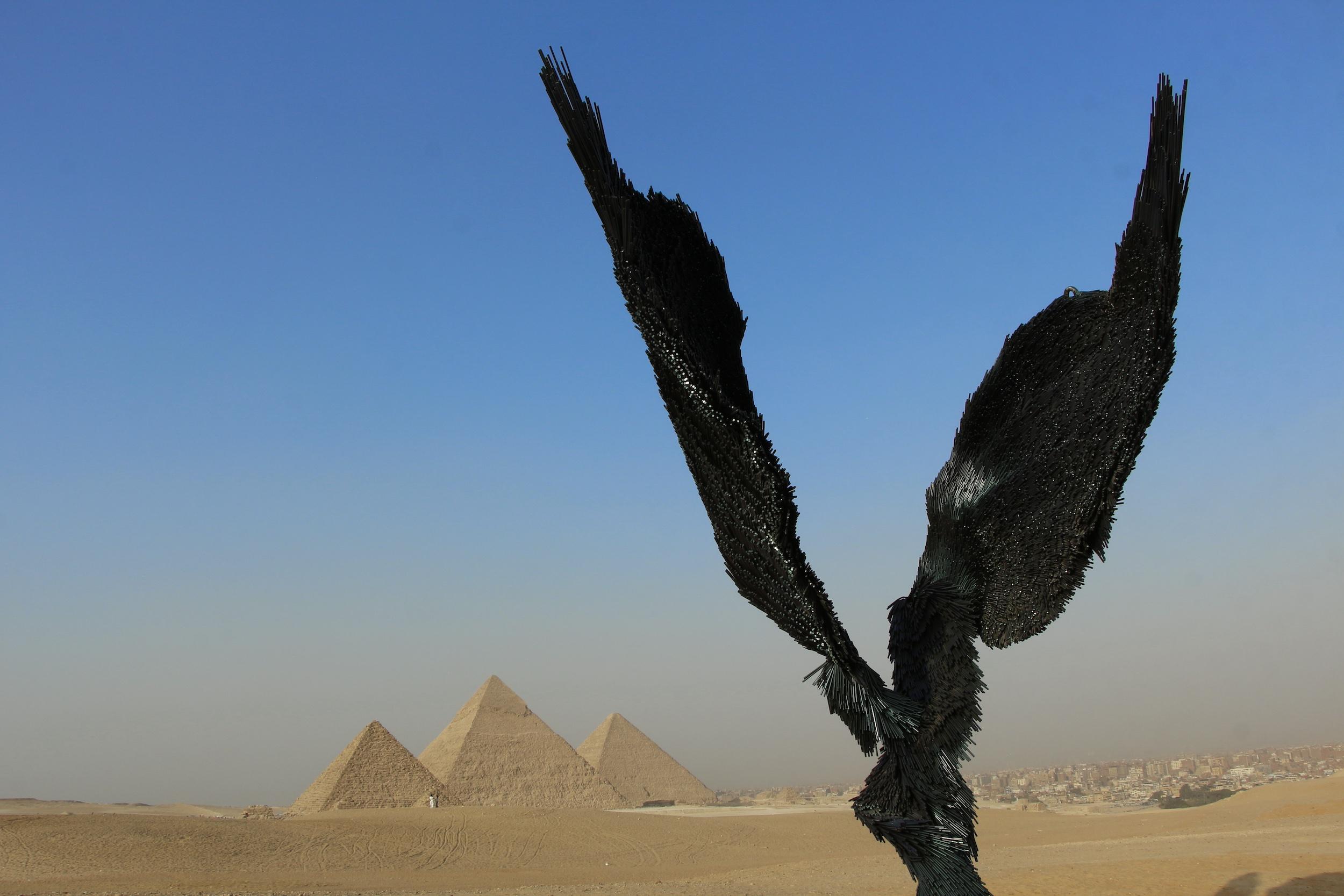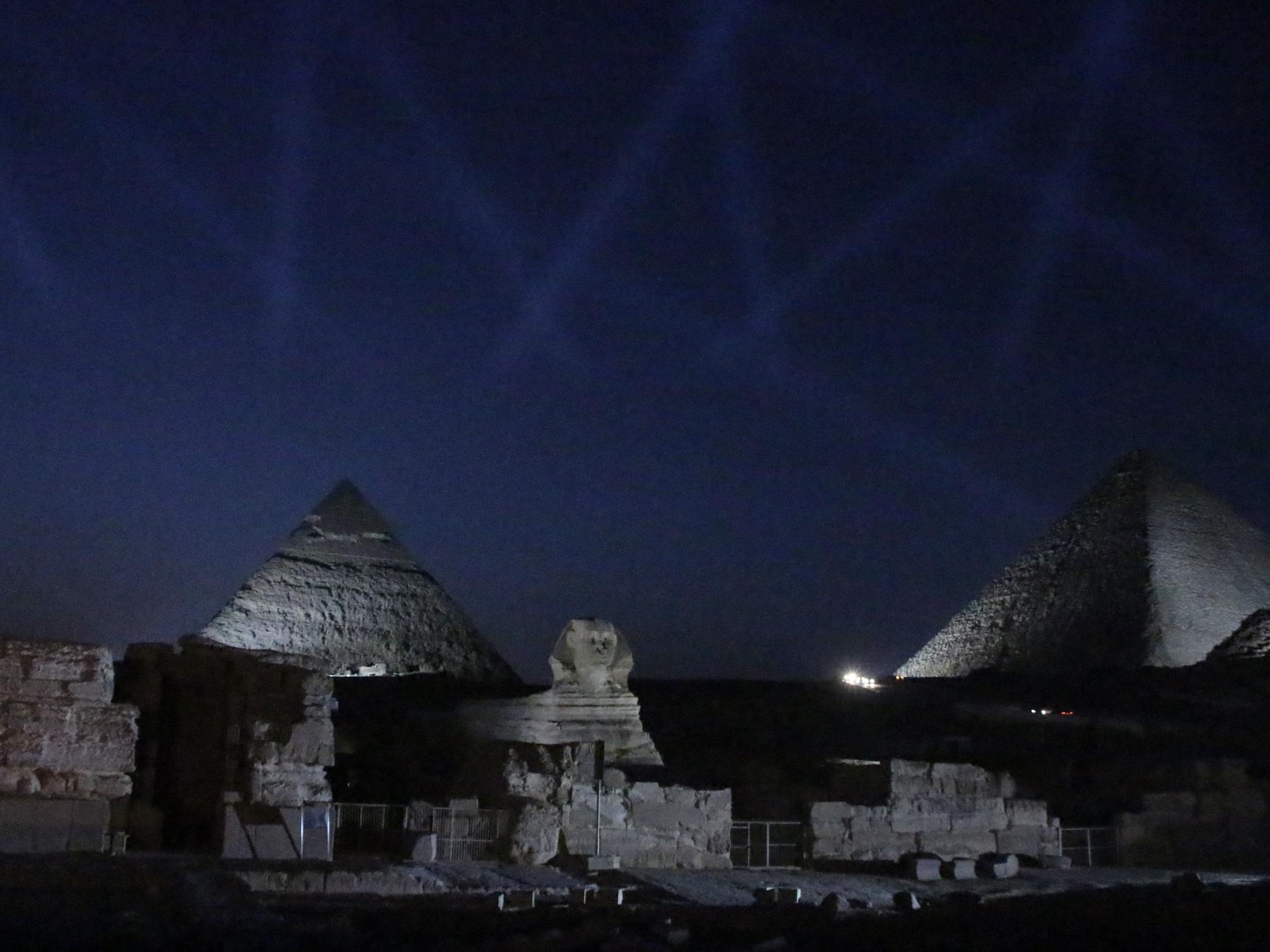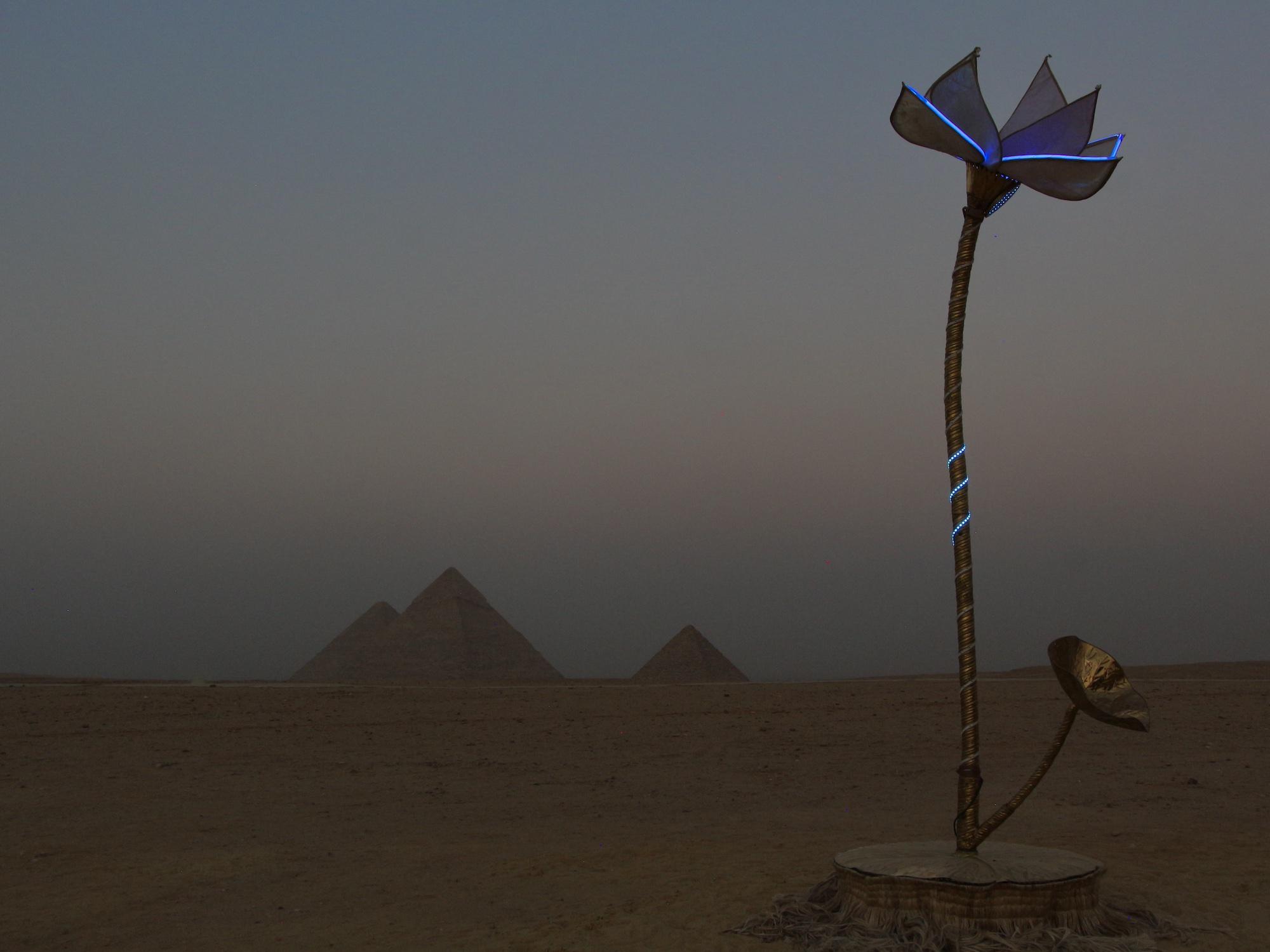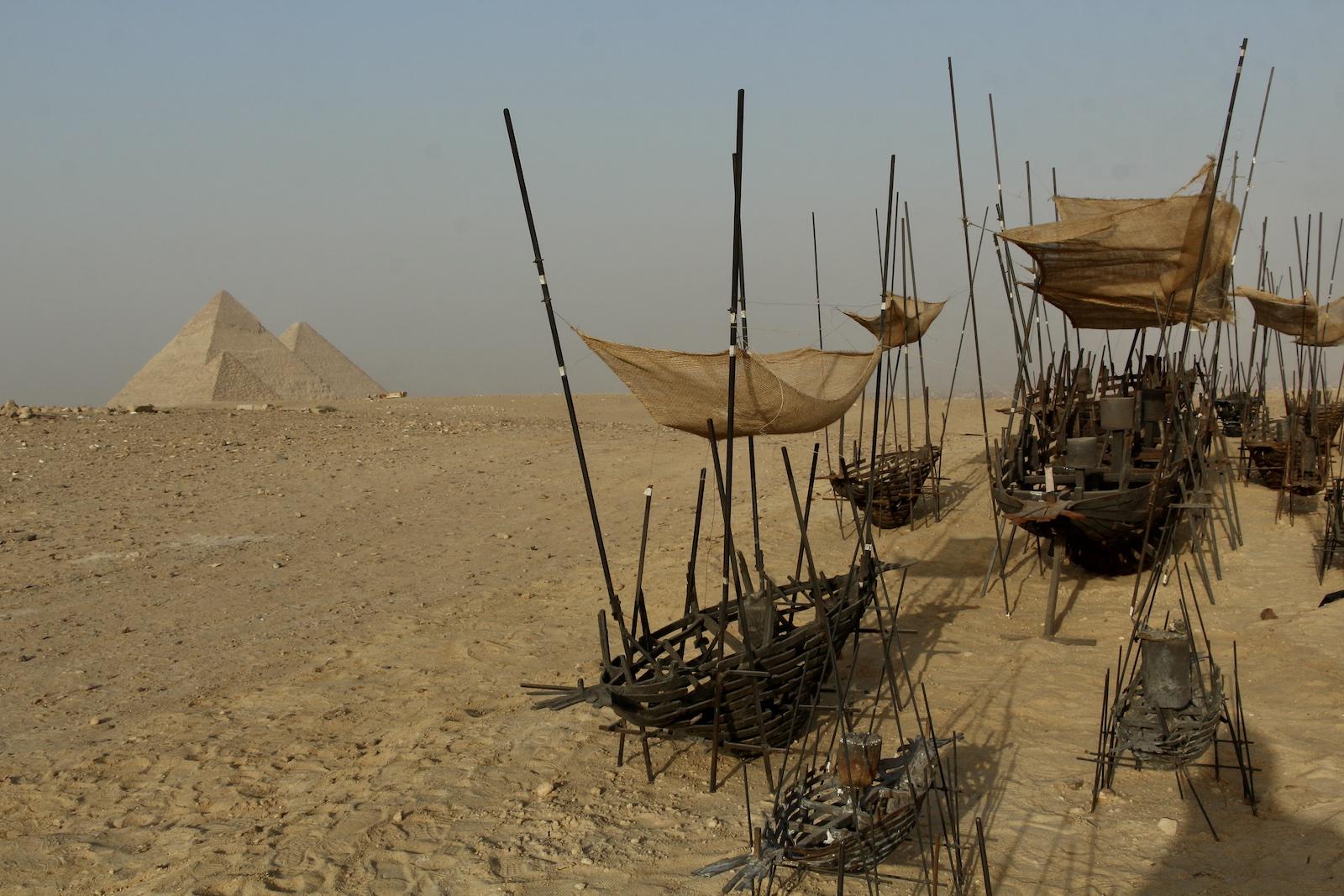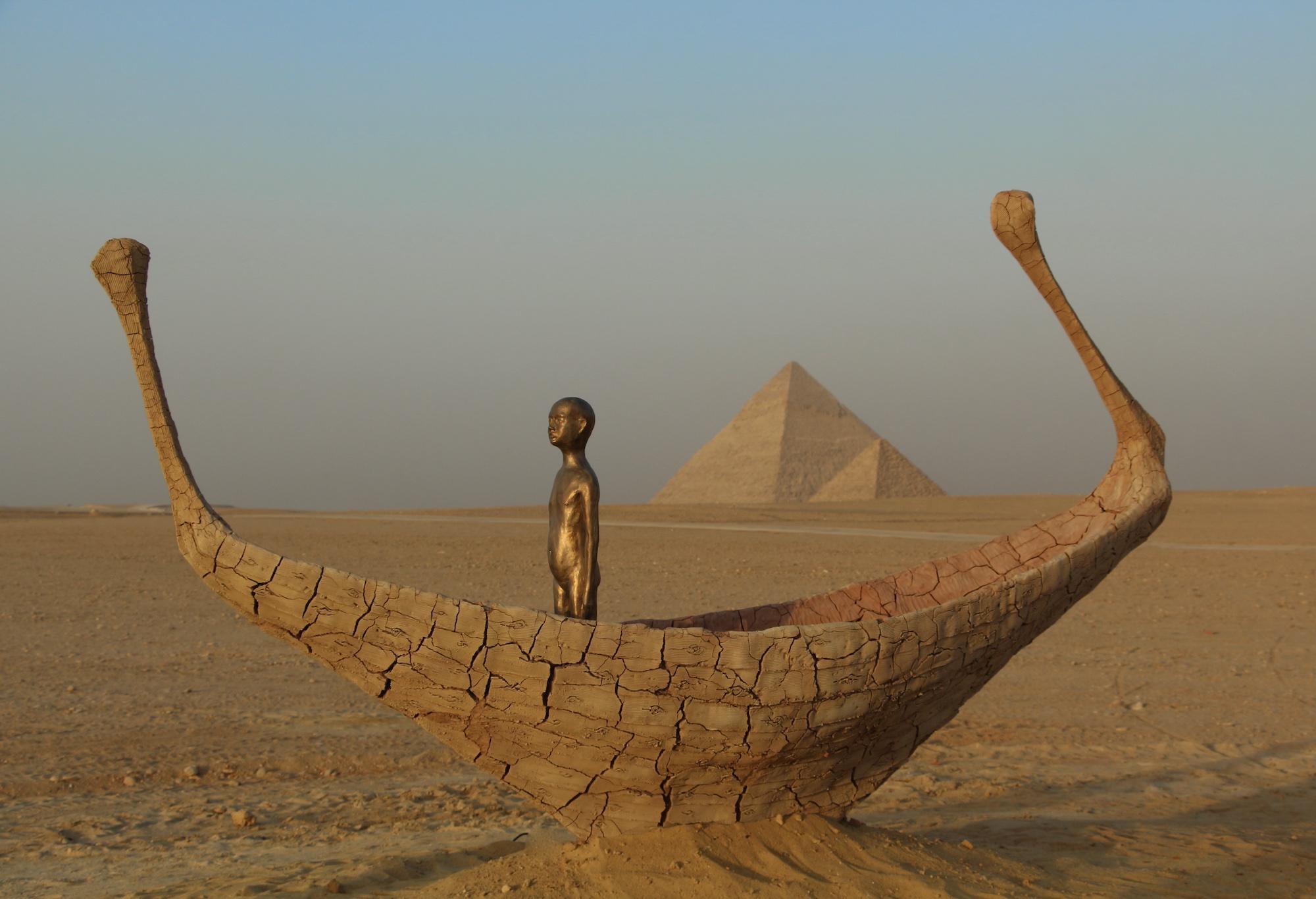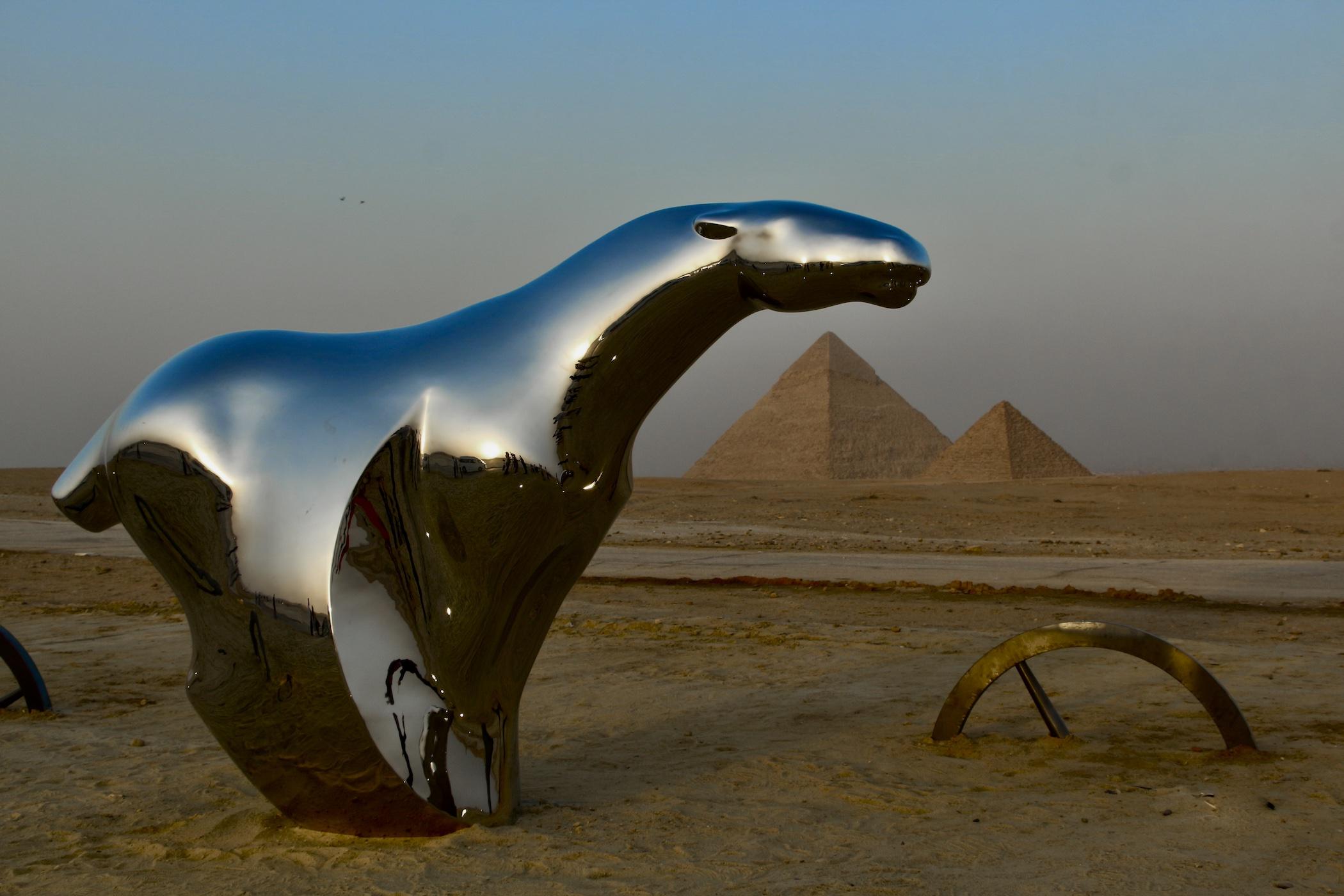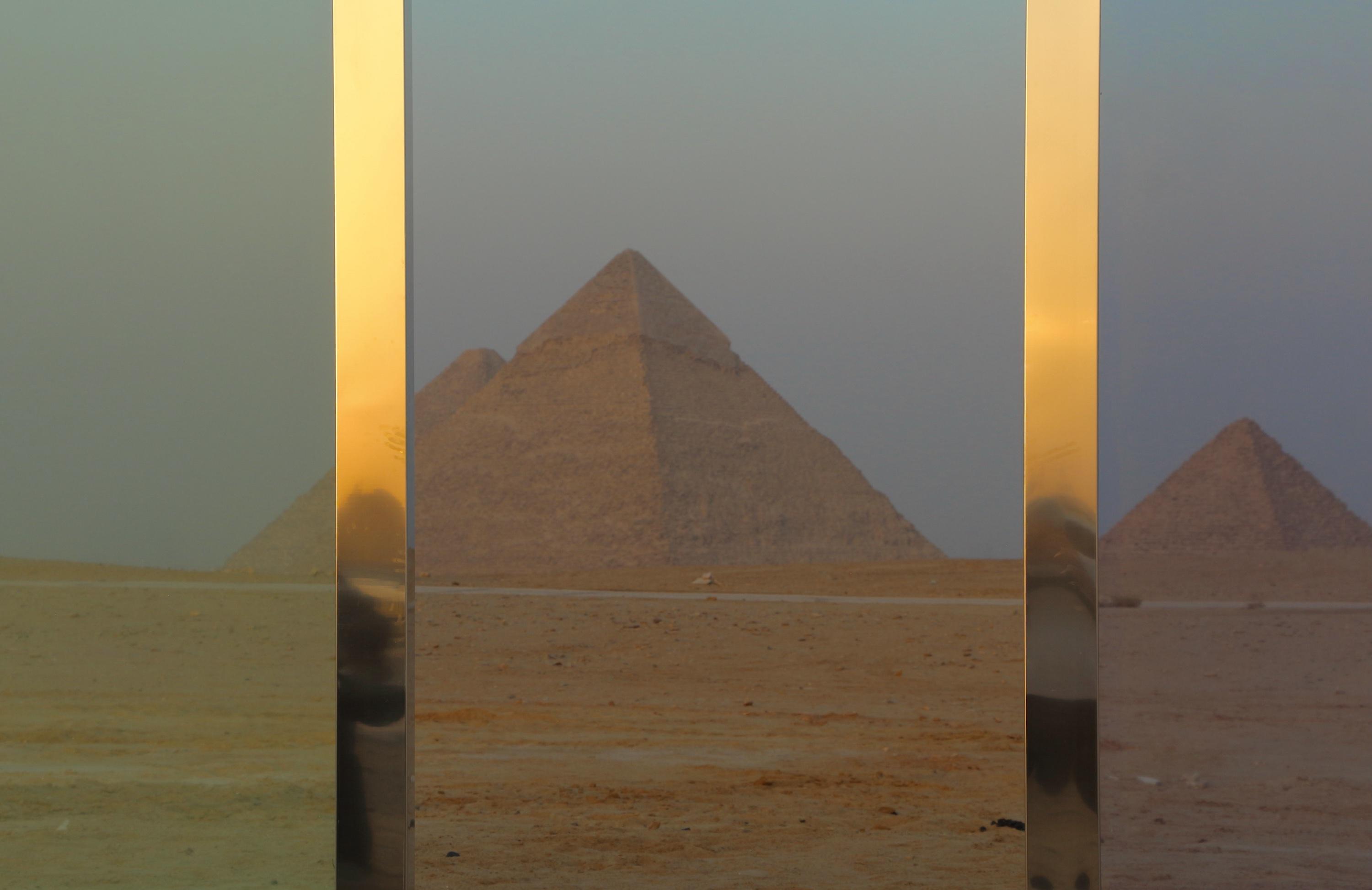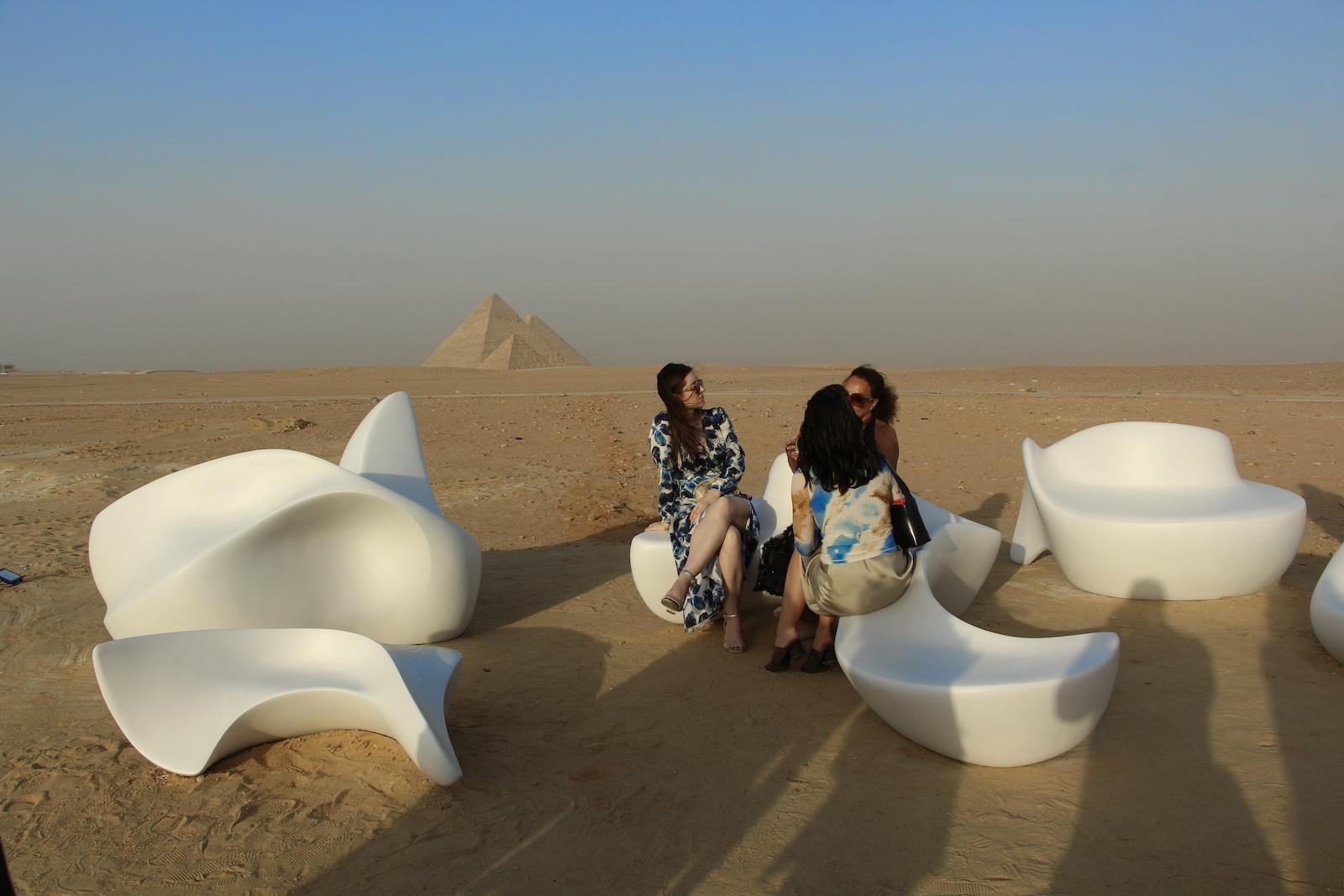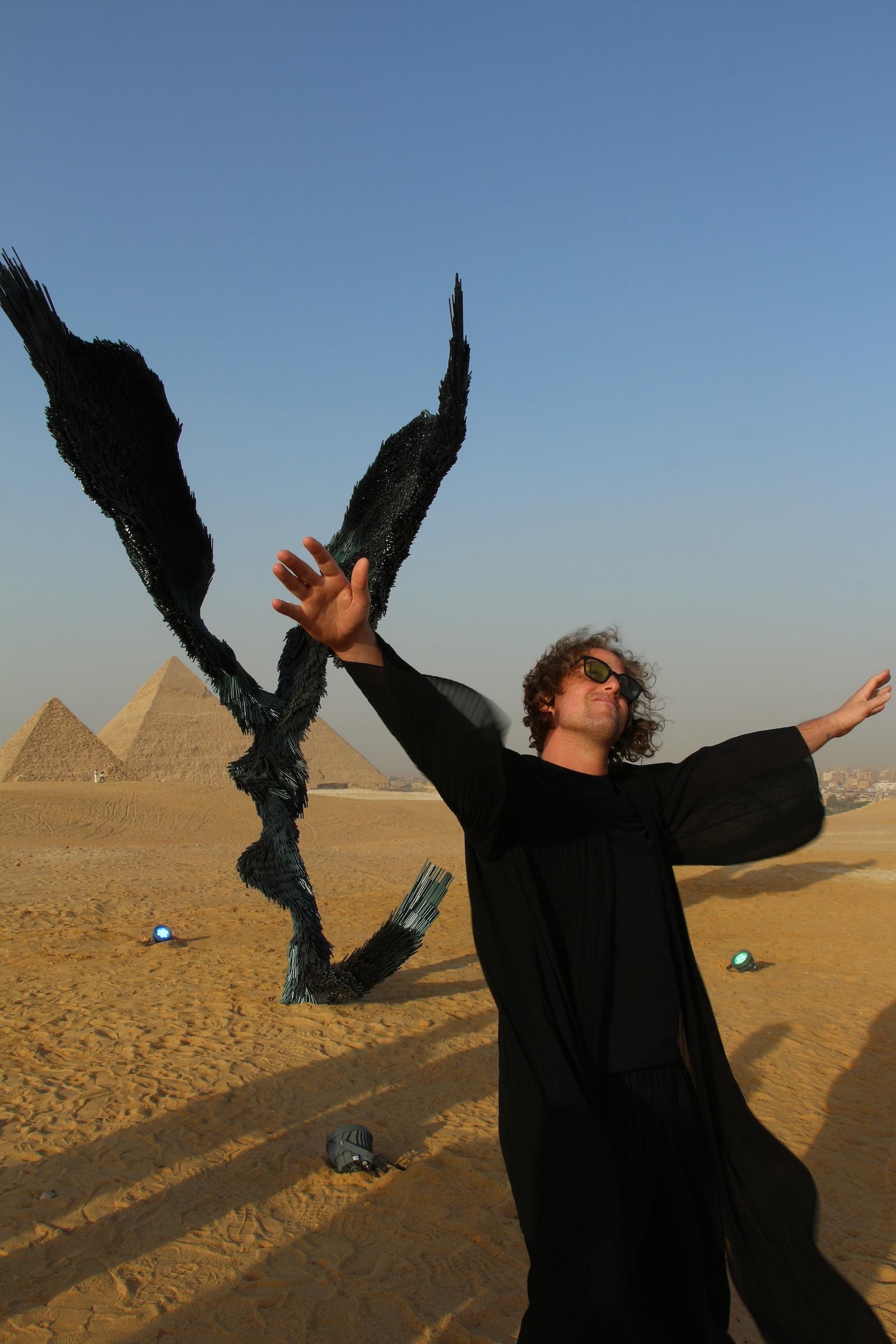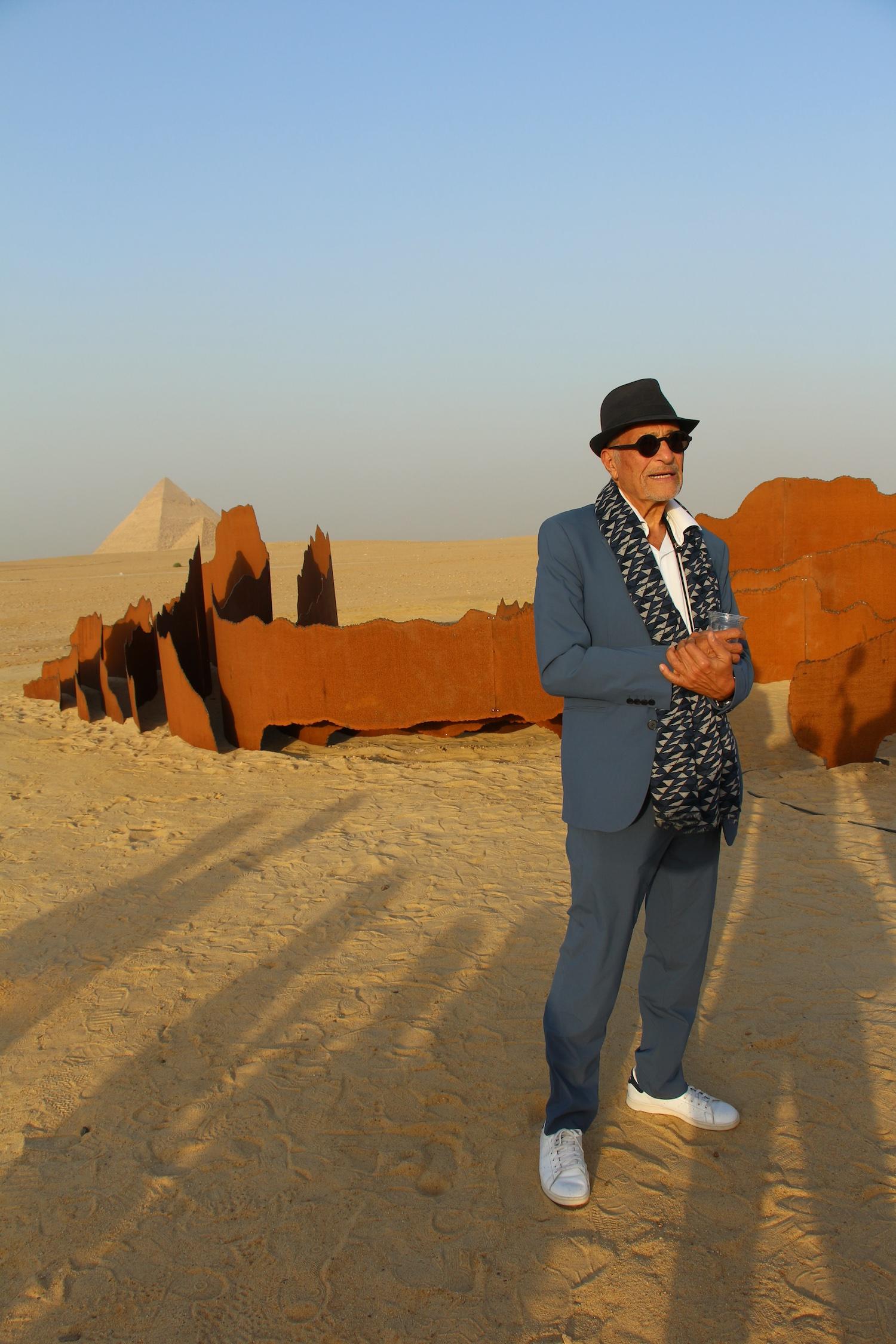A multi-disciplinary platform working to promote art, film, design, and music, Culturvator collaborates with private and public entities to create Art D’Égypte from scratch every year. Selections for 2024 include artists from India, the UK, Canada, Belgium, South Korea, South Africa, Greece, Italy, Egypt, France, and Spain.
Four Temples – Ik-Joong Kang
Kang’s series of cube-shaped installations has walls made of thousands of square tiles decorated with drawings and messages, including the Korean folk song “Arirang” written in Korean, English, Arabic, and hieroglyphs. The inner walls are composed of drawings by people from around the world, particularly children and those facing political and social strife.
“I kind of reversed the idea,” Kang tells Art & Object about Four Temples, which embodies common themes in his work– harmony, connectivity, empathy, and peace. “It’s not going toward the past. We have to look to the future.”




